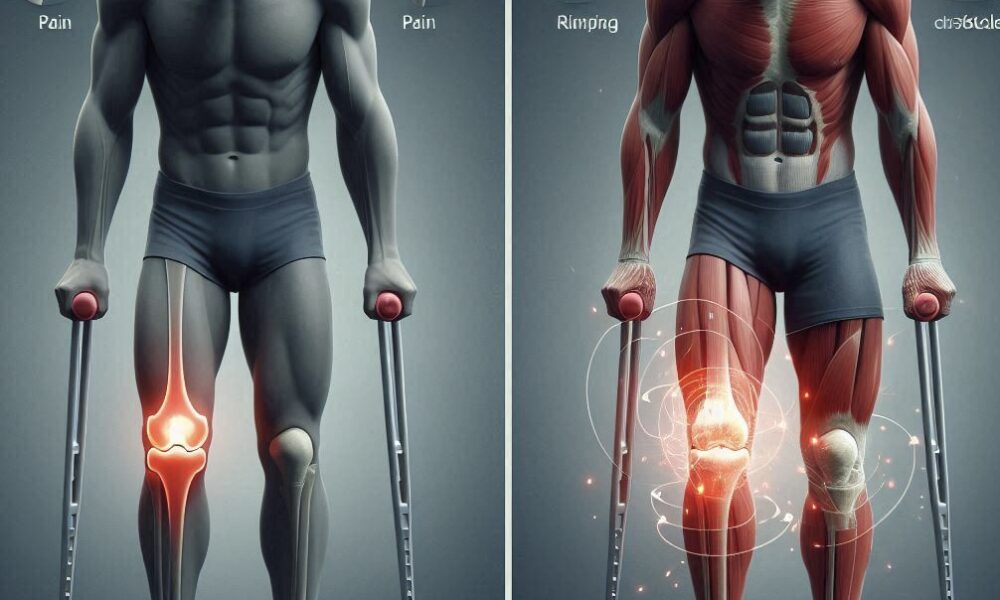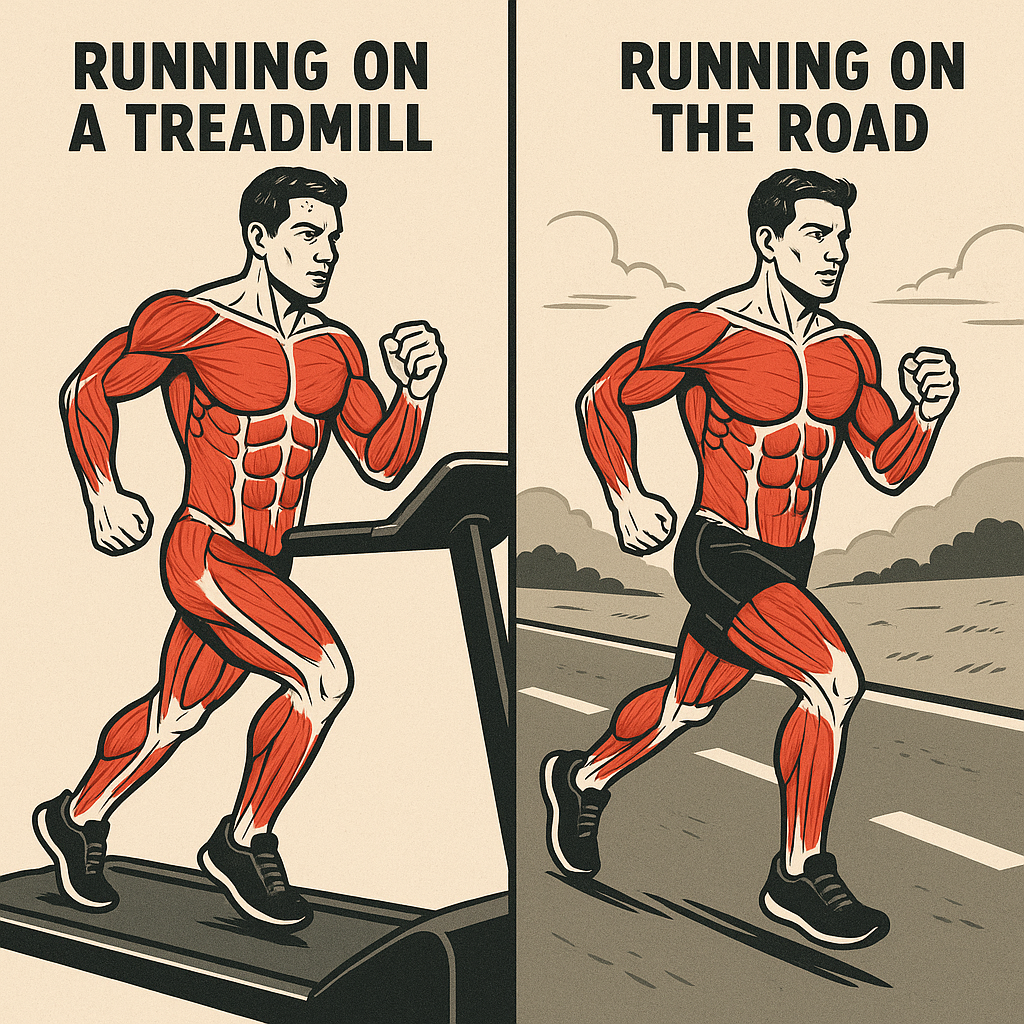Introduction: The Importance of Knee Health
The knees are one of the most vital joints in the human body, providing support, stability, and mobility to our legs and entire body. However, the knees are also one of the most vulnerable joints, prone to injuries, wear and tear, and chronic conditions like osteoarthritis.
Maintaining healthy knees is essential for our overall well-being, enabling us to perform daily activities, enjoy sports and hobbies, and live an active, independent life. Unfortunately, many of us take our knee health for granted until we experience pain, stiffness, or limited mobility.
The Benefits of Strengthening the Knees
Strengthening the knees offers numerous benefits, including:
Improved stability: Stronger knees provide better support and stability, reducing the risk of injuries and falls.
Reduced pain: Strengthening the knees can help alleviate pain and discomfort caused by weak or imbalanced muscles.
Injury prevention: Strengthening the knees can help prevent injuries, such as ligament sprains, tendonitis, and osteoarthritis.
Enhanced athletic performance: Stronger knees can improve athletic performance, enabling you to jump higher, run faster, and change direction more quickly.
The Purpose of This Post
In this post, we’ll provide you with effective exercises for strengthening the knees, improving stability, reducing pain, and preventing injuries. Whether you’re an athlete, a fitness enthusiast, or simply looking to maintain healthy knees, this post will provide you with the tools and knowledge you need to achieve stronger, healthier knees.
We’ll cover a range of exercises, including bodyweight exercises, resistance band exercises, and weightlifting exercises, to help you strengthen your knees and improve your overall knee health. So let’s get started!
Understanding Knee Anatomy: A Guide to the Knee Joint
Before we dive into the exercises for strengthening the knees, it’s essential to understand the anatomy of the knee joint. The knee joint is a complex structure composed of bones, ligaments, tendons, and surrounding muscles. In this section, we’ll explore the anatomy of the knee joint and discuss the role of the surrounding muscles.
The Bones of the Knee Joint
The knee joint is formed by the intersection of three bones:
Femur (thigh bone): The femur is the longest bone in the human body, and it forms the upper part of the knee joint.
Tibia (shin bone): The tibia is the second longest bone in the human body, and it forms the lower part of the knee joint.
Patella (kneecap): The patella is a small, triangular bone that sits at the front of the knee joint, protecting the joint and facilitating movement.
The Ligaments of the Knee Joint
Ligaments are fibrous connective tissues that connect bones to other bones, providing stability and support to the joint. The knee joint has four main ligaments:
Anterior cruciate ligament (ACL): The ACL is located in the center of the knee joint and provides stability to the joint by connecting the femur to the tibia.
Posterior cruciate ligament (PCL): The PCL is also located in the center of the knee joint and provides stability to the joint by connecting the femur to the tibia.
Medial collateral ligament (MCL): The MCL is located on the inner aspect of the knee joint and provides stability to the joint by connecting the femur to the tibia.
Lateral collateral ligament (LCL): The LCL is located on the outer aspect of the knee joint and provides stability to the joint by connecting the femur to the fibula.
The Tendons of the Knee Joint
Tendons are fibrous connective tissues that connect muscles to bones, facilitating movement and providing stability to the joint. The knee joint has several tendons, including:
Quadriceps tendon: The quadriceps tendon connects the quadriceps muscle to the patella, facilitating knee extension.
Patellar tendon: The patellar tendon connects the patella to the tibia, facilitating knee extension.
Hamstring tendons: The hamstring tendons connect the hamstring muscles to the tibia and fibula, facilitating knee flexion.
The Surrounding Muscles
The surrounding muscles play a crucial role in knee function and stability. The main muscles surrounding the knee joint are:
Quadriceps muscle: The quadriceps muscle is located on the front of the thigh and facilitates knee extension.
Hamstring muscles: The hamstring muscles are located on the back of the thigh and facilitate knee flexion.
Calf muscles: The calf muscles are located on the lower leg and facilitate ankle movement, but also play a role in knee stability.
Understanding the anatomy of the knee joint and the surrounding muscles is essential for maintaining healthy knees and preventing injuries. In the next section, we’ll explore the best exercises for strengthening the knees and improving knee health.
Knee Strengthening Exercises
Strengthening the knees is essential for maintaining healthy knees, preventing injuries, and improving overall knee function. In this section, we’ll explore the best exercises for strengthening the knees, including bodyweight exercises, resistance band exercises, and weightlifting exercises.
Section 1: Bodyweight Exercises
Bodyweight exercises are a great way to strengthen the knees without any equipment. Here are some of the most effective bodyweight exercises for knee strengthening:
Squats
1. Stand with your feet shoulder-width apart: Stand with your feet shoulder-width apart, toes facing forward or slightly outward.
2. Lower your body down into a squat: Lower your body down into a squat, keeping your back straight and your knees behind your toes.
3. Push through your heels to return to standing: Push through your heels to return to standing, squeezing your quadriceps and glutes at the top of the movement.
Lunges
1. Stand with your feet together: Stand with your feet together, take a large step forward with one foot.
2. Lower your body down into a lunge: Lower your body down into a lunge, keeping your front knee behind your toes and your back knee almost touching the ground.
3. Push through your front heel to return to standing: Push through your front heel to return to standing, squeezing your quadriceps and glutes at the top of the movement.
Leg Raises
1. Lie on your back with your arms at your sides: Lie on your back with your arms at your sides, lift one leg up towards the ceiling.
2. Lower your leg back down to the starting position: Lower your leg back down to the starting position, repeating with the other leg.
Calf Raises
1. Stand on the edge of a step or curb: Stand on the edge of a step or curb, raise up onto your tiptoes.
2. Lower your heels back down to the starting position: Lower your heels back down to the starting position, repeating for 12-15 reps.
Section 2: Resistance Band Exercises
Resistance band exercises are a great way to add some extra challenge to your knee strengthening workouts. Here are some of the most effective resistance band exercises for knee strengthening:
Banded Squats
1. Anchor the resistance band at hip height: Anchor the resistance band at hip height, stand on the band with your feet shoulder-width apart.
2. Lower your body down into a squat: Lower your body down into a squat, keeping your back straight and your knees behind your toes.
3. Push through your heels to return to standing: Push through your heels to return to standing, squeezing your quadriceps and glutes at the top of the movement.
Banded Lunges
1. Anchor the resistance band at hip height: Anchor the resistance band at hip height, stand on the band with your feet together.
2. Take a large step forward with one foot: Take a large step forward with one foot, lower your body down into a lunge.
3. Push through your front heel to return to standing: Push through your front heel to return to standing, squeezing your quadriceps and glutes at the top of the movement.
Banded Leg Curls
1. Anchor the resistance band at ankle height: Anchor the resistance band at ankle height, sit on the floor with your legs straight out in front of you.
2. Curl your legs up towards your glutes: Curl your legs up towards your glutes, keeping your knees straight.
3. Lower your legs back down to the starting position: Lower your legs back down to the starting position, repeating for 12-15 reps.
Banded Calf Raises
1. Anchor the resistance band at ankle height: Anchor the resistance band at ankle height, stand on the band with your feet shoulder-width apart.
2. Raise up onto your tiptoes: Raise up onto your tiptoes, keeping your knees straight.
3. Lower your heels back down to the starting position: Lower your heels back down to the starting position, repeating for 12-15 reps.
Section 3: Weightlifting Exercises
Weightlifting exercises are a great way to build strength and muscle mass in the knees. Here are some of the most effective weightlifting exercises for knee strengthening:
Leg Press
1. Sit in a leg press machine: Sit in a leg press machine, push the platform away from you with your feet.
2. Lower the platform down towards your chest: Lower the platform down towards your chest, then push it back up to the starting position.
Leg Extensions
1. Sit in a leg extension machine: Sit in a leg extension machine, lift the weight up off the ground with your legs.
2. Straighten your legs out in front of you: Straighten your legs out in front of you, then lower the weight back down to the starting position.
Leg Curls
1. Sit in a leg curl machine: Sit in a leg curl machine, lift the weight up off the ground with your legs.
2. Curl your legs up towards your glutes: Curl your legs up towards your glutes, then lower the weight back down to the starting position.
Calf Raises
1. Stand on a step or platform: Stand on a step or platform, raise up onto your tiptoes.
2. Lower your heels back down to the starting position: Lower your heels back down to the starting position, repeating for 12-15 reps.
Tips for Getting the Most Out of Your Knee Strengthening Workouts
Start with lighter weights and progress gradually: Start with lighter weights and progress gradually to avoid injury and ensure consistent progress.
Focus on proper form and technique: Focus on proper form and technique when performing exercises to ensure that you’re targeting the right muscles and avoiding injury.
Incorporate a variety of exercises into your routine: Incorporate a variety of exercises into your routine to ensure that you’re targeting all areas of the knees and avoiding plateaus.
By incorporating these exercises and tips into your workout routine, you’ll be on your way to stronger, healthier knees in no time!
Additional Tips for Healthy Knees
Maintaining healthy knees requires a comprehensive approach that goes beyond just exercising. In this section, we’ll discuss the importance of proper form and technique, provide tips for reducing knee pain and inflammation, and explain the role of diet and nutrition in supporting knee health.
The Importance of Proper Form and Technique
Proper form and technique are essential when performing exercises to ensure that you’re targeting the right muscles and avoiding injury. Here are some tips for maintaining proper form and technique:
Start with lighter weights and progress gradually: Start with lighter weights and progress gradually to avoid injury and ensure consistent progress.
Focus on slow and controlled movements*: Focus on slow and controlled movements to ensure that you’re targeting the right muscles and avoiding injury.
Engage your core and maintain proper posture: Engage your core and maintain proper posture to ensure that you’re stabilizing your body and avoiding injury.
Reducing Knee Pain and Inflammation
Knee pain and inflammation can be debilitating and frustrating. Here are some tips for reducing knee pain and inflammation:
RICE (Rest, Ice, Compression, and Elevation): RICE is a common treatment for knee pain and inflammation. Rest the affected area, apply ice to reduce inflammation, compress the area to reduce swelling, and elevate the area to reduce inflammation.
Stretching and foam rolling: Stretching and foam rolling can help reduce knee pain and inflammation by improving flexibility and reducing muscle tension.
Over-the-counter pain relievers: Over-the-counter pain relievers such as ibuprofen and acetaminophen can help reduce knee pain and inflammation.
The Role of Diet and Nutrition in Supporting Knee Health
Diet and nutrition play a critical role in supporting knee health. Here are some foods and nutrients that can help support knee health:
Omega-3 fatty acids: Omega-3 fatty acids found in fatty fish such as salmon and sardines can help reduce inflammation and promote healing.
Vitamin D: Vitamin D found in foods such as fortified dairy products and fatty fish can help promote bone health and reduce inflammation.
Calcium: Calcium found in foods such as dairy products and leafy greens can help promote bone health and reduce inflammation.
Antioxidants: Antioxidants found in foods such as berries and leafy greens can help reduce inflammation and promote healing.
Foods to Avoid
Some foods can exacerbate knee pain and inflammation. Here are some foods to avoid:
Processed meats: Processed meats such as hot dogs and sausages can promote inflammation and exacerbate knee pain.
Sugary foods: Sugary foods such as candy and baked goods can promote inflammation and exacerbate knee pain.
Dairy products high in sugar and saturated fat: Dairy products high in sugar and saturated fat such as cheese and whole milk can promote inflammation and exacerbate knee pain.
By incorporating these tips and foods into your daily routine, you can help support knee health and reduce knee pain and inflammation.
Conclusion: Stronger Knees for a Healthier You
And there you have it – a comprehensive guide to strengthening your knees and improving overall knee health. We’ve covered the best exercises for strengthening the knees, including bodyweight exercises, resistance band exercises, and weightlifting exercises. We’ve also provided tips for reducing knee pain and inflammation, and explained the role of diet and nutrition in supporting knee health.
A Quick Recap
Here’s a quick recap of the exercises and tips we’ve covered:
Bodyweight exercises: Squats, lunges, leg raises, and calf raises
Resistance band exercises: Banded squats, banded lunges, banded leg curls, and banded calf raises
Weightlifting exercises: Leg press, leg extensions, leg curls, and calf raises
Tips for reducing knee pain and inflammation: RICE (rest, ice, compression, and elevation), stretching and foam rolling, and over-the-counter pain relievers
Diet and nutrition tips: Foods rich in omega-3 fatty acids, vitamin D, and calcium, and avoiding processed meats, sugary foods, and dairy products high in sugar and saturated fat
Get Started Today!
Incorporating these exercises and tips into your daily routine can help you achieve stronger, healthier knees. So why wait? Get started today!
Share Your Favorite Knee Strengthening Exercises and Tips!
We’d love to hear from you! Share your favorite knee strengthening exercises and tips in the comments below. What works for you? What doesn’t? Let’s get the conversation started!
Thanks for reading, and don’t forget to share this post with your friends and family who may be struggling with knee pain or weakness. Happy exercising!




